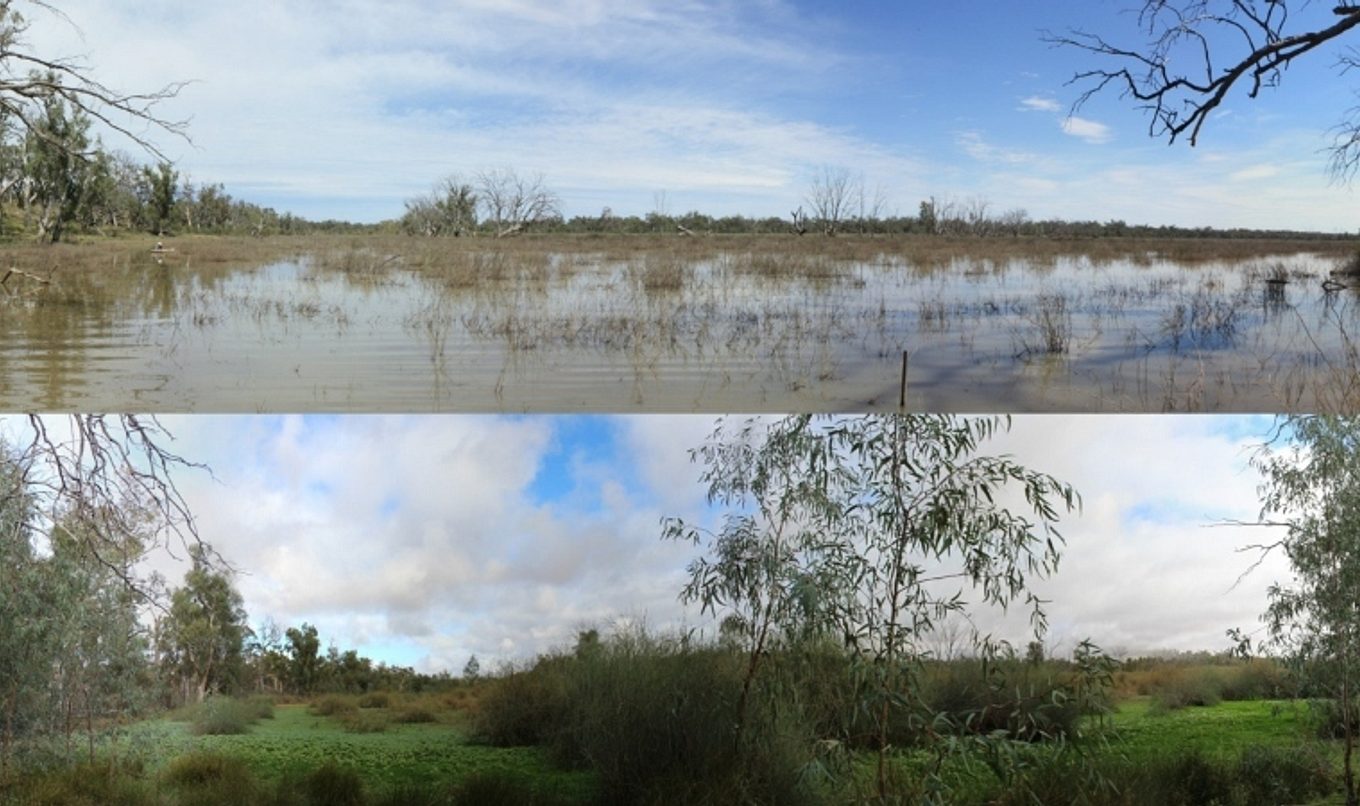Environmental watering works
Can the environment recover from devastating events such as the Millennium Drought?

Department for Environment and Water Wetlands Team Leader Darren Willis has photos which indicate it does – with well implemented and timely provision of water, and some strong, collaborative partnerships.
Image one shows Molo Flat wetland, near Cadell, in October 2011, shortly after the Millennium Drought broke.
There is some water present but the wetland is struggling with long-lived vegetation nearly dead or dying. On site you could see the aquatic habitat had taken a beating - aquatic species were almost non-existent and the feeding and nesting opportunities for water birds were poor, with salty groundwater on the floodplain.
Image two shows Molo Flat wetland in April 2020, following 10 years of consistent, careful delivery of water to the site through a partnership with the Commonwealth Environment Water Holder.
The wetland is drying after the previous spring and summer’s delivery of water for the environment. But the floodplain is well hydrated and long-lived vegetation is healthy and resilient.
The riparian vegetation is vigorous and is providing ample nesting opportunities for water birds; and macroinvertebrates (bugs and insects), native fish, yabbies, turtles and other aquatic species were abundant during the most recent wet phase.
This image taken in April reflects a healthy food web. The drying wetland basin and surrounding floodplain are covered by a rich carpet of herbs, sedges and grasses.
Mr Willis said it’s clear the environment can recover from dominant impactful events like the Millennium Drought.
“It takes longer than one or two years, but we can make it happen if we commit to the long-term game, and the results can be as powerfully positive as the drought was negative,” Mr Willis said.
“So next year, Molo Flat wetland’s main basin will go through a dry-phase, to mimic natural patterns and our team will be focusing their efforts on other managed wetland sites in partnership with the Commonwealth Environmental Water Holder.”
The critical water for this initiative was provided by the Commonwealth Environmental Water Holder, and the planning and implementation of this project are supported by the Australian Government’s Regional Land Partnerships initiative of the National Landcare Program and the South Australian Murray-Darling Basin Natural Resources Management Board and NRM levies.

